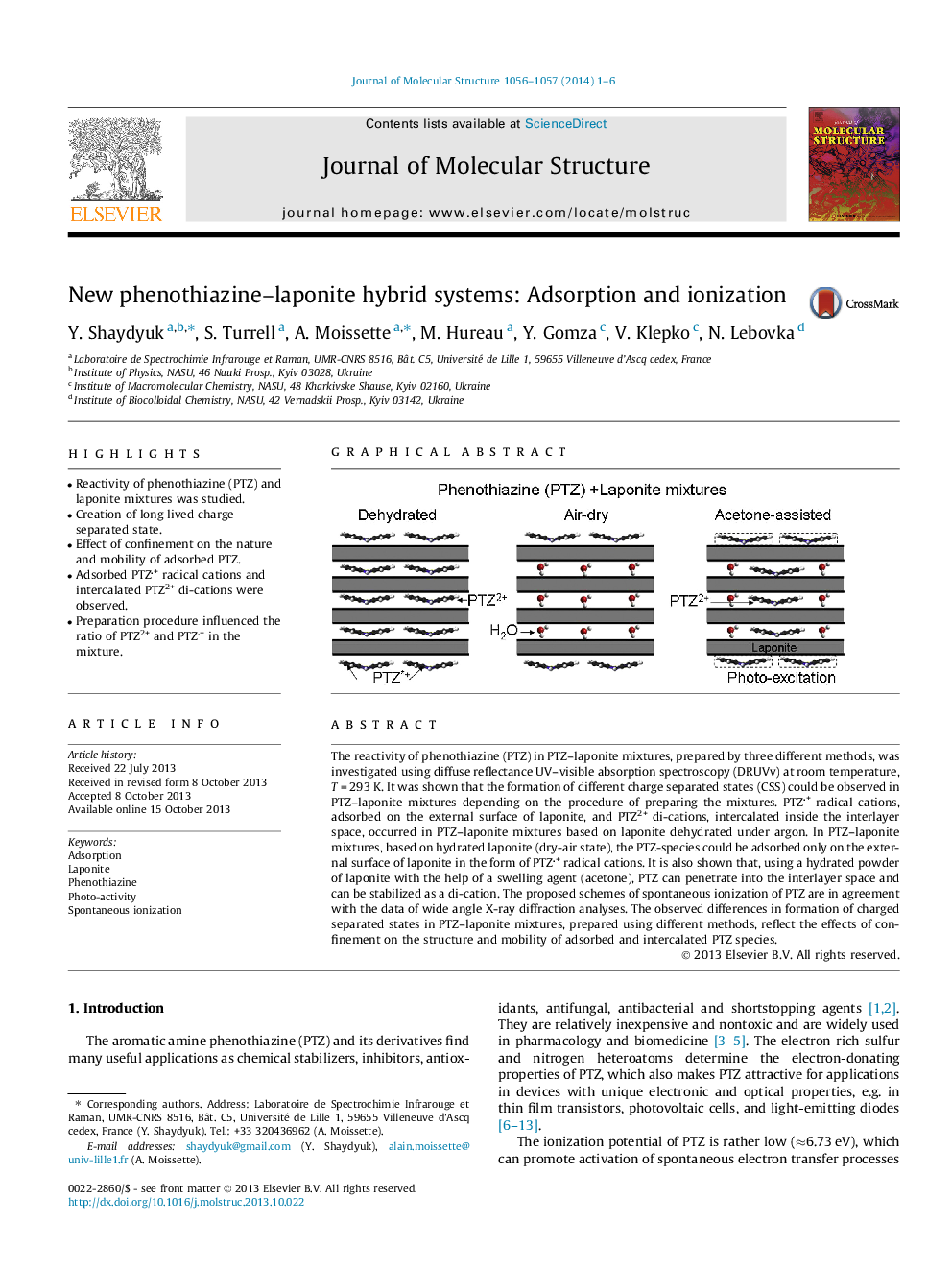| Article ID | Journal | Published Year | Pages | File Type |
|---|---|---|---|---|
| 1408566 | Journal of Molecular Structure | 2014 | 6 Pages |
•Reactivity of phenothiazine (PTZ) and laponite mixtures was studied.•Creation of long lived charge separated state.•Effect of confinement on the nature and mobility of adsorbed PTZ.•Adsorbed PTZ+ radical cations and intercalated PTZ2+ di-cations were observed.•Preparation procedure influenced the ratio of PTZ2+ and PTZ+ in the mixture.
The reactivity of phenothiazine (PTZ) in PTZ–laponite mixtures, prepared by three different methods, was investigated using diffuse reflectance UV–visible absorption spectroscopy (DRUVv) at room temperature, T = 293 K. It was shown that the formation of different charge separated states (CSS) could be observed in PTZ–laponite mixtures depending on the procedure of preparing the mixtures. PTZ+ radical cations, adsorbed on the external surface of laponite, and PTZ2+ di-cations, intercalated inside the interlayer space, occurred in PTZ–laponite mixtures based on laponite dehydrated under argon. In PTZ–laponite mixtures, based on hydrated laponite (dry-air state), the PTZ-species could be adsorbed only on the external surface of laponite in the form of PTZ+ radical cations. It is also shown that, using a hydrated powder of laponite with the help of a swelling agent (acetone), PTZ can penetrate into the interlayer space and can be stabilized as a di-cation. The proposed schemes of spontaneous ionization of PTZ are in agreement with the data of wide angle X-ray diffraction analyses. The observed differences in formation of charged separated states in PTZ–laponite mixtures, prepared using different methods, reflect the effects of confinement on the structure and mobility of adsorbed and intercalated PTZ species.
Graphical abstractFigure optionsDownload full-size imageDownload as PowerPoint slide
